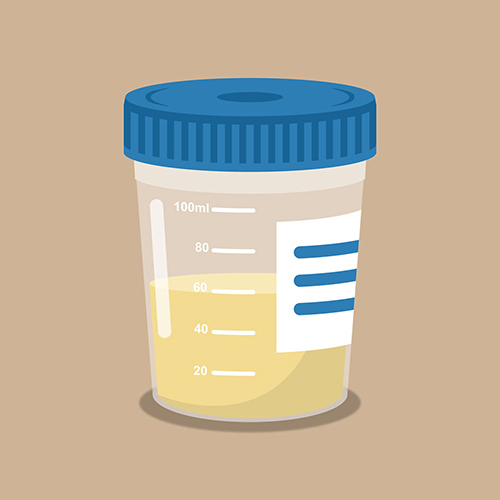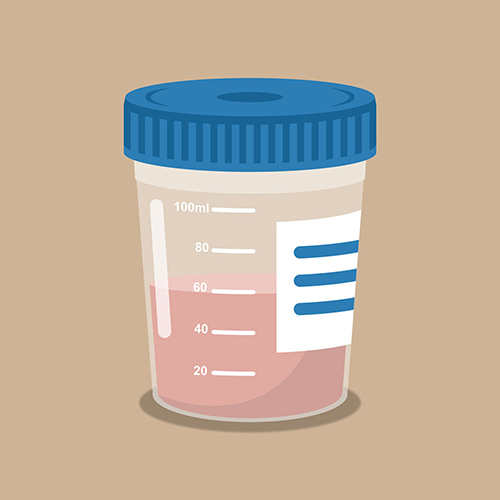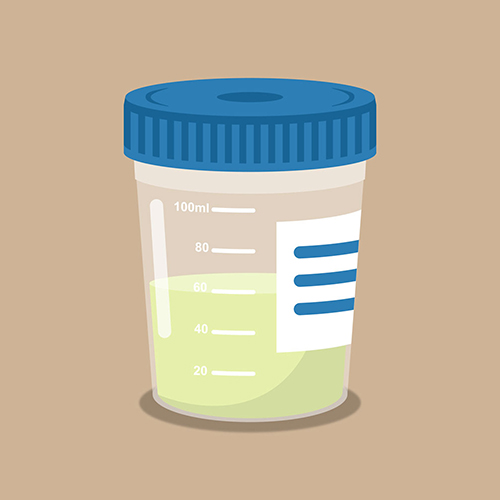Surely anyone can answer the question what color is semen? Most will answer blank. Or whitish gray, the most fussy. Both would be right, since, under normal conditions, semen is usually opalescent white or grayish in color. However, the color of the seminal fluid can vary and can be influenced by various factors. In fact, as we will see later, there are some color variations that can indicate certain conditions or health problems that you should be aware of.
What color is a healthy semen?
As we said, this opalescent white or grayish tone that we perceive is indicative that the semen is healthy, since it indicates an adequate concentration of spermatozoa and good reproductive function. This whitish appearance is due to the presence of spermatozoa and other seminal fluids that make up semen, such as prostatic fluids, seminal vesicles, and vas deferens. But semen is also made up of proteins, minerals, enzymes and hormones that contribute both to the texture and tonality of this peculiar fluid that we expel through the urethra during ejaculation.
It is important to note that semen color can vary slightly from individual to individual due to factors such as diet, hydration, ejaculation frequency, and other individual factors. However, in general, a translucent white or grayish shade is indicative of normal sexual and reproductive health.

How the color of semen varies depending on the age or life stage of the man
Yes, the color of the semen can vary depending on the age or life stage of the man. Although the most common and healthy semen color is opalescent white or grayish, some variations may exist.
-
During adolescence: During puberty and adolescence, the color of the semen may be lighter or even transparent. This is because sperm production is still establishing itself and it may take some time before a whiter, more opalescent concentration and consistency is achieved.
-
In adulthood: In general, the color of semen in adulthood remains opalescent white or grayish. However, there can be subtle variations based on diet, hydration, ejaculation frequency, and other individual factors.
-
In old age: As men age, there may be changes in semen production and quality. The color of the semen can become slightly more yellowish due to a lower concentration of spermatozoa and a greater presence of prostatic fluids.
What does a semen color other than white indicate?
Next, we will mention some possible tones that the semen can acquire for different reasons and their possible interpretations. The goal is to pay attention to significant changes in the color of the semen, especially if it is accompanied by other symptoms such as discomfort, a burning sensation, or pain when urinating or ejaculating:
-

yellow semen
A yellow tinge to the semen may be due to a higher concentration of urine in the semen, which is quite common and usually not a cause for concern. Especially if it occurs after ejaculating shortly after urinating. Even some foods rich in sulfur (garlic, onion, avocado…) can cause that more yellowish tone.
However, if the yellow color is very intense, it may indicate the presence of a urinary tract infection or some underlying condition (prostatitis, benign prostatic hyperplasia or bladder obstruction).
It could also be due to leukocytospermia, a condition due to an excess of white blood cells (leukocytes) in the semen caused by STDs, varicoceles, or infections.
Jaundice, an excess of bilirubin in the body, associated with liver problems, such as hepatitis, can not only stain the skin or eyes in a yellowish tone, but also semen. In all these cases, it is advisable to consult a doctor if it persists or if it is accompanied by other symptoms.
-

red or brown semen
The presence of blood in the semen is known as hematospermia. It can be alarming, but it’s usually not serious and tends to go away on its own. In most cases, no specific cause is found, but in some cases it may be associated with infections of the urinary tract, prostate or seminal vesicles, with lesions in these areas, chronic inflammation of the prostate or vesiculitis, stones in the male reproductive system or blood vessel problems.
Some medical procedures, such as prostate biopsies or urinary tract surgery, can temporarily cause hematospermia. Rarely, having blood in the semen can be associated with genitourinary cancer.
If the bleeding persists or is accompanied by pain or other worrisome symptoms, it is advisable to seek medical attention.
-

green semen
Green semen can be caused by a bacterial infection, especially if it is accompanied by pain, fever, or burning with urination. Some other possible causes of greenish semen include the presence of immature sperm, which is more common in adolescents and young men who are experiencing hormonal changes and whose reproductive system has not yet fully matured.
On the other hand, diet can also influence the color of semen. For example, excessive consumption of certain foods, such as asparagus or colored foods, could lead to changes in semen coloration. And even some medications or supplements can temporarily affect the color of the semen and make it appear greenish.
Lastly, if a person abstains from intercourse or ejaculation for a long period of time, the accumulated semen can change its color and texture. In general, if the greenish semen is an isolated occurrence and not associated with other symptoms, it is probably not a cause for concern. However, if greenish semen presents with other worrisome symptoms, such as pain, swelling, fever, or other changes in sexual health, it is important to seek medical attention to properly assess the situation and rule out any underlying conditions.
In addition to the colors mentioned above, it is important to note that there are less common ones and they can have different implications for physical or sexual health. Here are some additional colors and their possible meanings:
-

off-white semen
Gray colored semen can indicate a lack of sperm or a low concentration of sperm, which can affect male fertility. But in addition, it may be due to what is known as retrograde ejaculation, which occurs when semen is diverted into the bladder instead of out through the urethra during ejaculation.
Other reasons for this tone may be the presence of urinary tract infections, such as urethritis or prostatitis, or inflammatory processes. The consumption of certain foods, drugs or supplements or smoking can alter the coloration.
In many cases, grayish semen may be a temporary occurrence and does not necessarily indicate a serious medical condition. However, if grayish semen occurs with other worrisome symptoms, it is advisable to see a doctor if you suspect this problem.
-

bluish semen
Blue or bluish semen is extremely rare and is usually caused by the presence of a substance called methylene blue, which may be associated with certain foods or medications, used to dye tissue or treat certain infections that, if ingested, can be excreted in the urine and also in the semen, which can give rise to a bluish color to the semen.
Other external factors, such as consuming certain foods or drinks with artificial colors, can cause these color changes. This peculiar hue can also be due to the presence of chemicals or dyes in condoms, lubricants, or sex toys.
In any case, being so unusual, it is best if you notice a persistent blue color in your semen, it is important to seek medical attention.
-

Clear or watery semen
Clear or watery semen is usually a normal variation in semen appearance and is not usually a cause for concern. It can simply indicate a diluted ejaculate or a lower concentration of sperm. This may be associated with factors such as good hydration -otherwise it would have a thicker or gelatinous texture- or that there have been several ejaculations in a short period of time, which means that the volume of semen may be less and have a waterier appearance.
This more transparent tone also appears in what is called cleaning semen, which is none other than the remaining semen in the urethra after a previous ejaculation that can come out during urination.
In some cases, the semen can appear more watery if there are no sperm present in it, known as azoospermia. This can be due to factors such as obstruction of the vas deferens or a congenital absence of sperm, and can affect fertility.
Except for the last one, in most cases, it is not a cause for concern, but if it persists or worries you, do not hesitate to consult a doctor.
-

greenish yellow semen
A greenish-yellow hue in the semen may indicate the presence of urinary tract or male reproductive system infections, as well as sexually transmitted infections, such as gonorrhea or chlamydia. Gonorrhea is a bacterial infection caused by the bacterium Neisseria gonorrhoeae, which can infect the male reproductive system, including the urethra, prostate, and seminal vesicles. This can lead to inflammation and infection of these organs, which causes the release of pus and other inflammatory fluids into the semen. Pus is a yellow or green substance that contains white blood cells, protein, and cellular debris, and is responsible for the yellowish-green hue that can be seen in semen affected by a common STI infection.
If you suspect an infection, you should seek medical attention for proper diagnosis and treatment.
Remember that semen color can vary and does not necessarily indicate a health problem. However, if you have concerns or notice significant changes in color, consistency, or if it is accompanied by other symptoms such as pain, burning, or discomfort, it is important to seek the opinion of a health professional for proper diagnosis and treatment.













